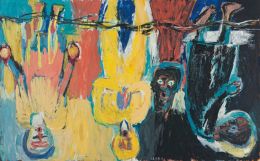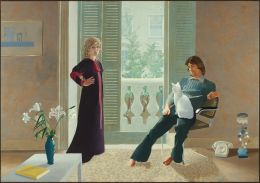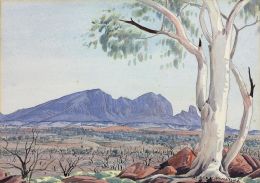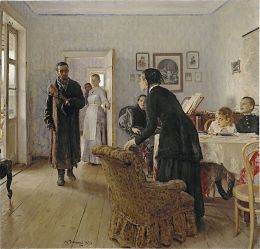Known for his proficiency with both Eastern and Western artistic traditions, and his ability to employ both simultaneously within his work, Zao Wou-Ki has become an important figure in mid-century art historical canon. Born Zhao Wou-Ki (assuming the name Zao after 1947) in 1920 in Peking (now Beijing), Wou-Ki attending the National School of Arts, Hangchow, for six years before becoming a drawing instructor there. In 1947, the artist moved to Paris where he would become friends with the artists Alberto Giacometti and Joan Miró. His work, done in an abstract, gestural style quickly drew acclaim, and ultimately worked to help reestablish abstraction during a time when critics were beginning to question whether the style could appropriately express the harsh realities and emotions of the post-war world.
Alongside others associated with the École de Paris, Zao began painting in an even bolder fashion, employing highly saturated color and intense lines in his compositions; by the mid-1950s the influence of Chinese calligraphy became more pronounced, and the artist occasionally omitted Western styles of painting for actual calligraphy. It was at this time that Zao was regularly making trips to New York City, where he met several of the Abstract Expressionists such as Barnett Newman and Franz Kline. By the 1970s, line and gesture receded from his work, replaced by hazy, surreal compositions with a blurred sense of space.
Although Zao is most commonly known as a painter, he often collaborated with other and created performance stage sets, illustrated books of poetry, and numerous prints and engravings. Zao died in Switzerland at the age of 93 in 2013.























































